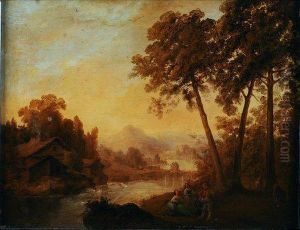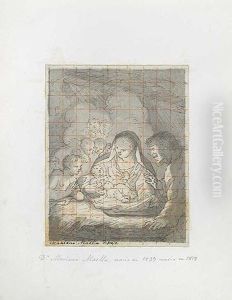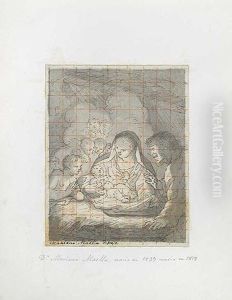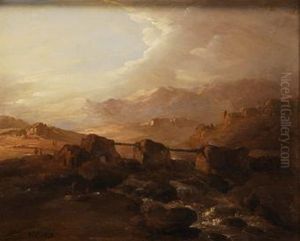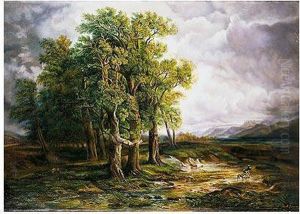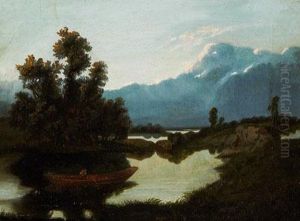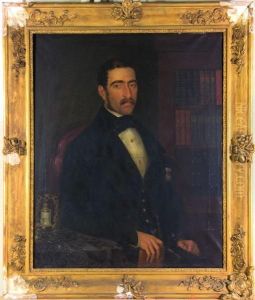Vicente Camaron Torra Paintings
Vicente Camarón Torra was a Spanish painter and engraver born on July 2, 1772, in Segorbe, a town in the province of Castellón, Valencia. Although not as widely known as some of his contemporaries, Camarón Torra made significant contributions to Spanish art, particularly within the Neoclassical movement, which was prominent at the time.
Camarón Torra showed an early aptitude for art and was initially trained by his father, who was also an artist. Later, he moved to Valencia to further his education under the guidance of Mariano Salvador Maella, a respected painter of the era. His studies continued in Madrid, where he honed his skills at the Real Academia de Bellas Artes de San Fernando, one of Spain's foremost art academies. Here, he was influenced by the works of Francisco Goya and other leading artists of the time.
Throughout his career, Camarón Torra became known for his religious paintings, portraits, and tapestry designs. He often drew upon biblical and mythological themes, which were common among Neoclassical artists, who sought to emulate the arts of ancient Greece and Rome. His work is characterized by its careful composition, clear lines, and attention to detail, reflecting the principles of the Neoclassical style.
In addition to his painting, Camarón Torra also worked as an engraver, and some of his engravings are held in high esteem. He was a member of the Real Academia de Bellas Artes de San Carlos in Valencia, which further attests to his standing in the art community.
Vicente Camarón Torra passed away on January 14, 1822. While he may not be as well-remembered as some of his peers, his contributions to Spanish Neoclassical art remain significant. His works can be found in various institutions and collections in Spain, offering a glimpse into the artistic trends and cultural milieu of his time.
